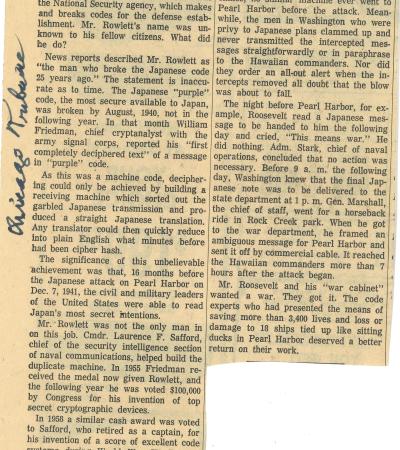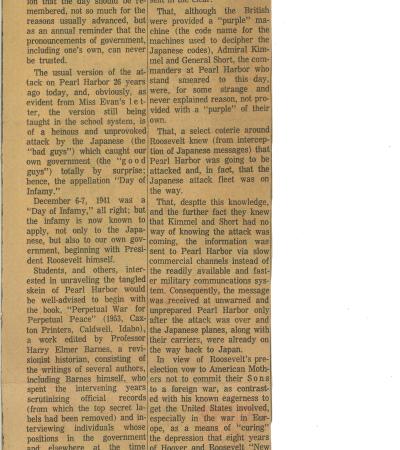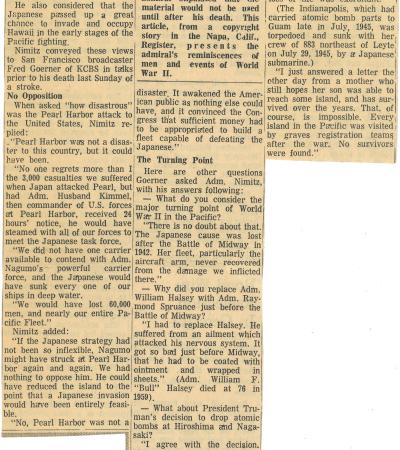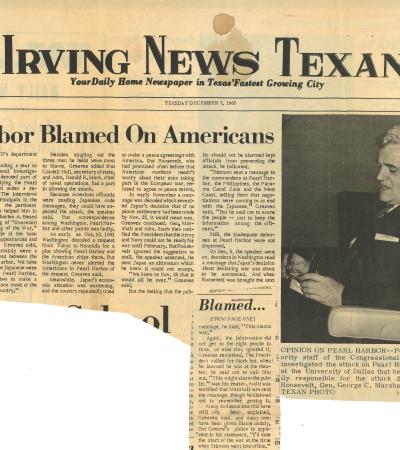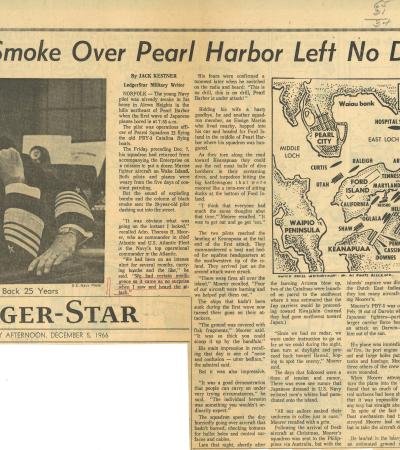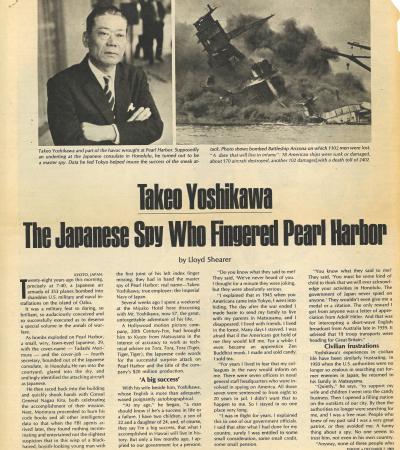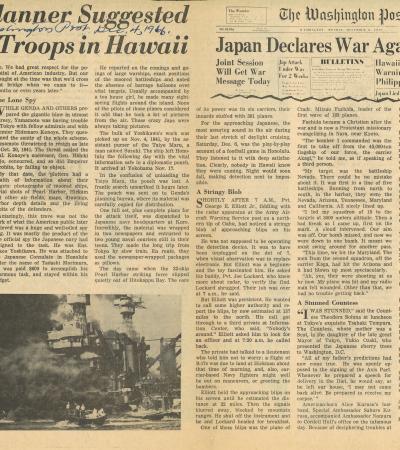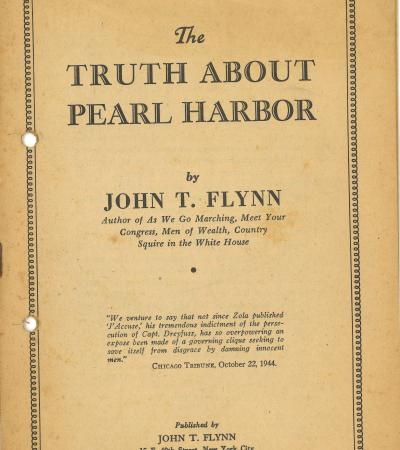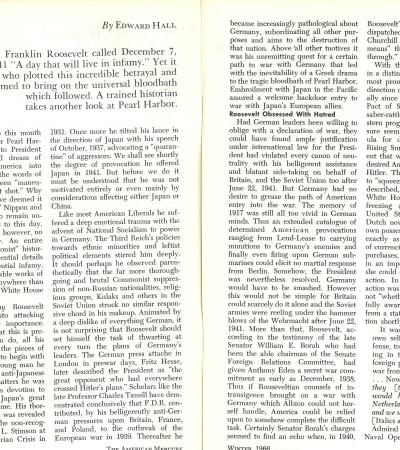Charles C. Hiles was a career naval officer. He served from 1914 to 1947, when he retired with the rank of lieutenant commander. Hiles was stationed at Pearl Harbor when the Japanese attacked on December 7, 1941. After he retired, he devoted time to researching and writing about the events leading up to the Pearl Harbor attack and the U.S. entry into World War II. His papers include reports on the hearings before the U.S. Congress on the Pearl Harbor attack, newspaper articles and pamphlets.
"The Code-Breakers", Chicago Tribune
This article discusses U.S. code-breaking which was used to decipher Japanese communications before Pearl Harbor.
"Day of Infamy", Colorado Springs Gazette Telegraph, December 7, 1967
This newspaper article makes a revisionist argument. It claims that the Pearl Harbor "Day of Infamy" should be infamous because President Roosevelt and those around him found a means to propel the U.S. into the war in Europe through the backdoor provided by the Japanese military.
"Pearl Harbor Attack May Have Saved Lives - Nimitz"
This newspaper article reports on an interview with Admiral Chester W. Nimitz shortly before his death. Nimitz claimed that the Pearl Harbor attack would have been even more disastrous had the Pacific Fleet sailed out to meet the attacking Japanese.
"Pearl Harbor Blamed On Americans" by Shirley Houston, Irving News Texan, December 7, 1965
This newspaper article assets that President Roosevelt, General George C. Marshall (Chief of the U.S. Army) and Henry L. Stimson (Secretary of War) were responsible for the outbreak of war with Japan.
"Black Smoke Over Pearl Harbor Left No Doubts" by Jack Kestner, Ledger-Star, December 5, 1966
This newspaper article summarizes the Pearl Harbor remembrances of Admiral Thomas H. Moorer. Moorer was a Navy pilot who raced to Pearl Harbor as soon as he realized it was under attack. He recalled the "noise and confusion - utter bedlam" of the day.
"Takeo Yoshikawa - The Japanese Spy Who Fingered Pearl Harbor" by Lloyd Shearer, Parade, December 7, 1969
This article covers the activites of Japanese naval spy Takeo Yoshikawa. Yoshikawa was sent to Hawaii under the guise of being a junior diplomat. In Hawaii, he was responsible for scouting the movement of American ships and air patrols.
"Attack Planner Suggested Landing Troops in Hawaii" by Bob Considine, The Washington Post, December 4, 1966
This newspaper article provides insight into the planning of the Japanese prior to the attack on Pearl Harbor. At one point there was discussion of attacking the West Coast of the U.S. where many American warplane manufacturing plants were located. There were also plans to land Japanese troops in Hawaii.
"The Truth About Pearl Harbor" by John T. Flynn
This pamphlet examines the events leading up to the Japanese attack on Pearl Harbor, attributing significant blame to the Roosevelt administration's diplomacy and military strategy. Flynn argues that Admiral Kimmel and General Short were inadequately informed and constrained by orders from Washington, which prioritized political strategy over genuine military readiness.
"Day of Infamy" by Edward Hall, The American Mercury, 1966
This magazine article takes the revisionist perspective and states that President Roosevelt had effectively goaded Japan into taking the first overt military step - attacking Pearl Harbor.
